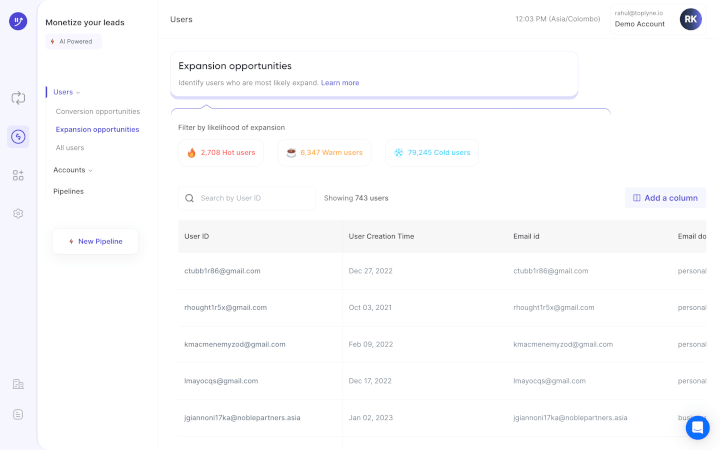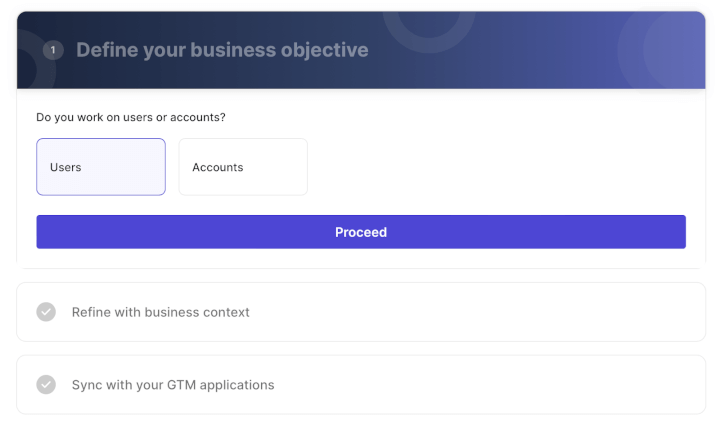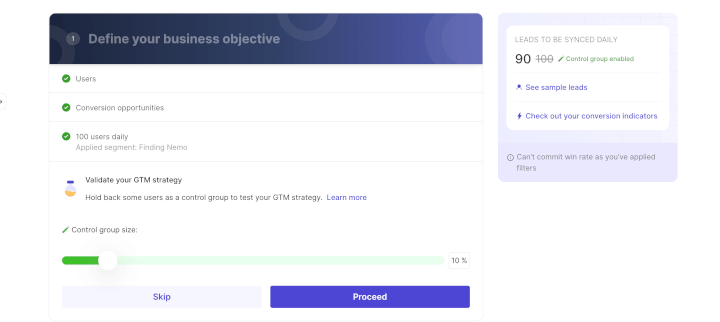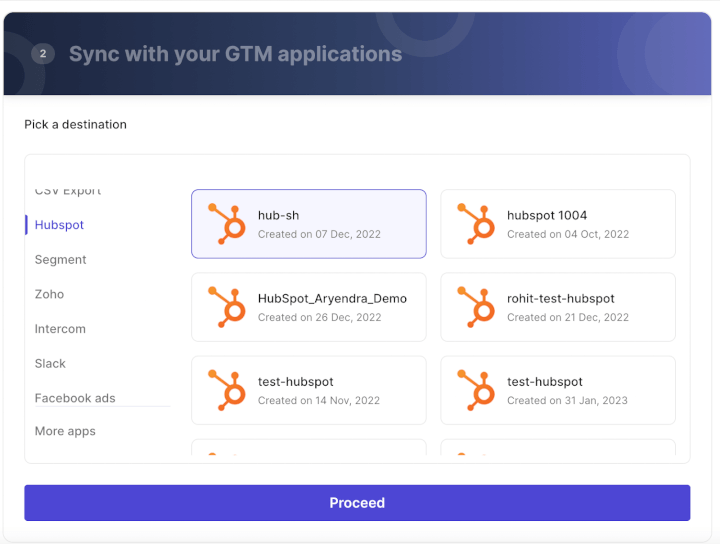The Ultimate Guide To A Building A Sales Funnel

A sales funnel is the holy grail that defines the buyer's journey from interest to purchase. It allows you to see how prospects progress through different stages until they become a paying customer.
By analyzing and optimizing your sales funnel, you can find ways to improve your sales and marketing strategies. In this article, we walk you through:
- What is a sales funnel and why is it important for your business?
- The significance of a well-structured sales funnel, and
- Discuss the variety of benefits it can bring to your business.
Effective Sales Funnel Simplified: Optimize Conversions and Growing Your Business
We've all experienced the frustration of coming so near to a closed won, only to watch the deal slip away. After countless outreach efforts, demos, and follow-ups, new customers entirely vanish from the sales radar without making a purchase.
There's a solution that can significantly reduce such missed opportunities. The sales funnel has entered the picture.
Picture this: A seamless process that ensures prospects smoothly transition through each stage of their purchasing journey. Say goodbye to the leaky, patchwork sales approaches, scattered fields on a CRM, and missed follow-ups that plague your customer journey and prevent your sales teams from hitting their quota.
In this guide, we'll unravel the concept of the sales funnel—the magical path potential customers take toward conversion.
The Importance of a Well-Structured Sales Funnel:
You may be wondering why a well-structured sales funnel is so important for your business. The reasons are simple:
- The sales funnel works by providing a systematic approach to generating, nurturing, and converting leads, making sure that no potential customer slips away unnoticed.
- By guiding potential customers through each stage of the sales funnel, you can capture their interest, address their needs, and improve your chances of making a sale.
- Another great benefit of a well-structured sales funnel is its ability to help you build strong and lasting relationships with your customers. Nurture qualified leads, offer valuable content and experiences, and boost customer loyalty to maximize long-term value. With a solid sales funnel, you can:
- Keep your existing customers happy
- Upsell them your products or services, and
- Increase your conversion rates
Understanding the Sales Funnel Framework:
To create an effective sales funnel, you need to understand the structure, parts, and stages of your sales funnels.
Let's break it down:
- Awareness: At the top of the funnel (ToFu), the main goal is to make people aware of your brand and what you offer. This awareness stage involves attracting your target audience and introducing them to your products or services.
- Interest: In the middle of the funnel (MoFu), the focus is on capturing the interest of potential customers by providing valuable content. In this interest stage, you educate and nurture leads, build trust, and address their problems.
- Decision: The next stage, i.e. the decision stage helps customers make an informed choice by offering value and addressing their concerns. It's important to guide them toward choosing your product or service over your competitors.
- Action: At the bottom of the funnel (BoFu), the main objective is to motivate customers to take the desired action, like making a purchase or signing up. This stage requires persuasive calls to action and a smooth conversion process.
- Understanding the structure and stages of a sales funnel, from creating awareness to capturing interest, guiding decisions, and inspiring action, is essential for building an effective sales pipeline.
Step-by-Step Guide to Building a Sales Funnel:
Now that you have a good understanding of the sales funnel framework, let's dive into a step-by-step guide on how to build your own highly effective sales funnel:
- Define Your Target Audience:
Prepare for market exploration! Conduct thorough research and create vivid buyer personas. Imagine who your ideal customers are, their needs, pain points, and motivations.
By tailoring your marketing funnel to their specific needs, you'll be equipped to create a captivating journey.
- Generate Leads and Attract Prospects:
Generating leads and attracting prospects is an ongoing task that requires consistent effort. Regularly assessing your sales funnels helps identify areas for improvement.
Experiment with elements like headlines, call-to-actions (CTAs), and content formats to find the best combination that maximizes conversion rates.
For instance, you could test different headline variations to see which one generates more clicks or try out different CTAs to determine which one prompts more sign-ups.
By continuously refining your sales funnels based on data and feedback, you can ensure they stay effective in drawing in and converting prospects.
- Qualify and Segment Your Leads:
When it comes to qualifying and segmenting leads, it's important to evaluate if they're a good fit and group them based on their needs. By using effective lead qualification techniques, you can identify leads that match your target audience and have the potential to become valuable customers.
This segmentation allows you to customize your sales approach and messages to address their specific challenges, prioritize their needs, and increase your chances of closing deals.
- Nurture Leads and Build Relationships:
Embrace the power of a comprehensive lead-nurturing strategy. Help your leads become champions of your products in their companies by sharing useful collateral like case studies, regularly engaging with them, and addressing their concerns. This incorporates Email marketing - building an email list, Personalized content, and Marketing automation.
- Tailor your communication through targeted emails that deliver relevant and engaging types of content and offers aligned with their interests and needs like customer testimonials, case studies, and whitepapers.
- Automate this process using marketing automation tools to ensure consistent and timely interactions.
- By nurturing leads and fostering genuine relationships, you establish trust and credibility, ultimately increasing the likelihood of the champion bringing in the conversion.
- Convert Leads into Customers:
This is where the magic happens.
- Create compelling calls-to-action (CTAs) that urge leads to take action.
- Make sure your landing pages are optimized for a seamless and effortless conversion process.
- To motivate prospects, offer enticing incentives, discounts, or limited-time offers. Build trust and confidence in your product or service by showcasing compelling testimonials and social proof.
- Retain and Upsell Paying Customers:
The journey doesn't end with the conversion. Now, focus on retaining your paying customers and unlocking their true potential.
- Use personalized communication, loyalty programs, and outstanding customer service to keep them engaged.
- Look out for opportunities to upsell a higher pricing tier to them or cross-sell other products that you offer their priorities, scale, and pain points.
By nurturing these existing relationships and prioritizing customer retention, you can transform happy customers into loyal champions, fostering repeat business, and long-term success.
Building strong connections with your customers through personalized experiences, exceptional customer service, and ongoing engagement ensures their satisfaction and encourages them to become ambassadors for your brand.
This dedication to customer retention is a key driver of sustainable growth and profitability.
Essential Tools and Technologies for Sales Funnel Building:
If you want to build an effective sales funnel, you need the right tools and technologies at your fingertips.
Here are some essential ones that you should consider using:
- Customer Relationship Management (CRM) System:
A powerful CRM system that helps you:
- Effortlessly manage customer data
- Track interactions, and
- Automate your sales processes.
With these tools, you'll gain a comprehensive view of your customers and enjoy seamless communication and collaboration within your team.
- Product Analytics Platforms:
Unlock valuable insights into your customers' behavior, engagement levels, and conversion rates with the help of product analytics platforms. By analyzing these data points, you can identify areas for improvement and fine-tune your sales funnel to deliver better results.
- Email Marketing Tools:
Supercharge your email campaigns with:
- Outreach Automation,
- Audience segmentation,
- And detailed performance measurement using email marketing tools.
These tools empower you to send targeted and personalized messages that nurture leads and drive conversions, all while saving you time and effort.
- Landing Page Builders:
Landing page builders help optimize sales funnels by creating persuasive and conversion-focused pages.
Landing page builders help you create captivating sales pages that guide your prospects to take action. Bonus: You don't need any technical skills to do it.
- Behavioral Analytics Tools:
Use behavioral analytics tools to gain valuable insights into how your prospects interact with your sales funnel.
Toplyne is a behavioral AI platform used by Canva and Vercel. Built on first-party product usage, CRM, billing, and third-party enrichment data.
Analyzing in-product activity and merging it with CRM data along with billing data, and other third-party data, helps prioritize leads with higher conversion potential. This results in improved conversion rates and sales efficiency.
Here’s how companies like Canva and Vercel generate sales pipeline from their self-serve funnel using Toplyne:
- Step 1/7: Create monetization playbooks to surface conversion and expansion opportunities (leads most likely to convert to paying customers, and teams most likely to grow into larger teams)

- Step 2/7: Choose the right leads to target – users (individual users) or accounts (a group of users with an organization).

- Step 3/7: Select the frequency at which you would want leads synced in your GTM apps.

- Step 4/7: Define how many leads you want by either the number of leads or your expected win rate, depending on your sales capacity and GTM strategy.

- Step 5/7: Build custom segments - Build custom segments based on And/Or logic at the deepest level of sub-properties within your product analytics.

- Step 6/7: Validate your GTM strategy - Hold back some users as a control group to test your GTM strategy.

- Step 7/7: Sync your product qualified pipeline into your GTM destinations - CRMs, sales & marketing execution tools, and customer engagement platforms.

Best Practices for Maximizing Your Sales Funnel Performance:
If you want to get the most out of your sales funnel, try incorporating these effective strategies:
- Personalize Your Communication and Offerings:
Connect with your prospects on a personal level by customizing your communication and offerings to cater to their unique needs and preferences.
This personal touch builds trust and strengthens your relationship, significantly boosting your chances of converting them into customers.
- Continuously Test and Improve Your Funnel:
Experiment with different elements of your funnel, such as:
- Pricing strategies
- Sales copy and messaging
- Upselling and cross-selling techniques
To drive sales, conduct A/B tests and monitor your funnel closely. Compare different variations to find what works best with your prospects and improve your approach.
Continuously analyze and optimize your funnel to discover areas for improvement, refine your strategies, and achieve better results over time.
Stay proactive by testing and adapting to ensure your sales process is optimized for higher conversions and revenue growth.
- Foster Collaboration between Sales and Marketing:
Fostering a close working relationship between your sales teams and marketing teams including social media functions ensuring they are aligned in terms of messaging, metrics, and strategies.
This collaboration ensures a seamless experience for your customers across all touchpoints and enhances the overall effectiveness of your sales funnel.
- Prioritize Customer Experience and Relationship Building:
Focus on delivering exceptional customer experiences throughout every stage of your funnel. Set clear response time expectations, develop a customer-centric support approach, and monitor and prioritize customer feedback.
By nurturing strong relationships with your customers, you not only increase their satisfaction but also encourage repeat purchases and word-of-mouth referrals.
Overcoming Common Challenges in Building Your Sales Funnel:
As you embark on building your sales funnel, you may encounter some common challenges. With the right strategies, you can overcome them and achieve success.
Let's explore how:
- Lead Generation and Quality:
Generating high-quality leads can be tricky. To overcome this challenge:
- Focus on targeted email marketing campaigns through an outreach strategy tailored to your ideal audience.
- Optimize your website to capture leads effectively, and offer valuable content or incentives in exchange for their contact information.
- Continuously refine your targeting efforts to reach the right audience and regularly assess and optimize your lead generation tactics.
- Lead Conversion and Closing:
Converting leads into customers requires skillful nurturing, persuasive messaging, and targeted sales and marketing efforts.
- To help prospects make better decisions, address their concerns, and answer their questions. One way to do this is by providing them with helpful materials like case studies, testimonials, white papers, and product explainer documents that give them the information they need to understand the product better.
- Use personalized and targeted communication to build trust and confidence in your product.
- Implement sales collateral and follow-up sequences to stay top-of-mind, boost conversions, and effectively communicate your value proposition.
- Sales and Marketing Alignment:
Misalignment between sales and marketing teams can lead to inefficiencies and missed opportunities. To overcome this challenge:
- Foster open communication and collaboration between all teams.
- Ensure they share common metrics and have a clear understanding of the buyer's journey.
- Regularly review and refine the handoff process between the marketing and sales teams to ensure a seamless transition and consistent brand messaging.
- Measurement and Analytics:
Accurate measurement and analysis of your sales funnel's performance are crucial for optimization.
- Set up tracking mechanisms to monitor key metrics like conversion rates, pricing changes, win rates, and customer lifetime value.
- Utilize analytics tools to gain insights into user behavior, engagement, and conversion rates.
- Regularly review and analyze data to identify areas for improvement and make data-driven decisions.
Wrapping Up:
Creating a powerful sales funnel is a game-changer for your business. It's the key to boosting growth and skyrocketing conversions.
By understanding the significance of a well-designed sales funnel, understanding its structure, and implementing them effectively, you'll be on your way to building a strong and effective funnel.
Start implementing these techniques, and you'll be able to overcome any challenges that come your way and experience remarkable results.
So, start putting them into action and watch your sales funnel lead your business to success.


.svg)









.png)